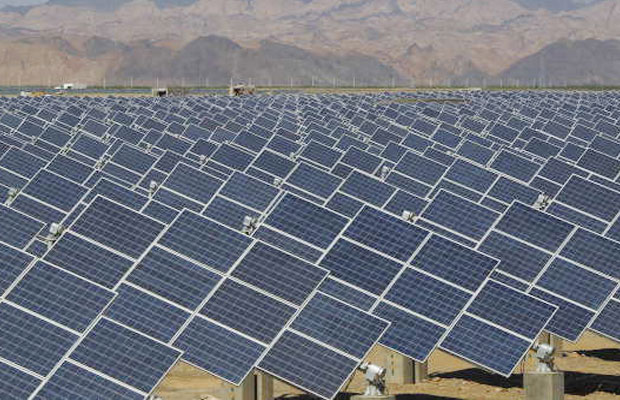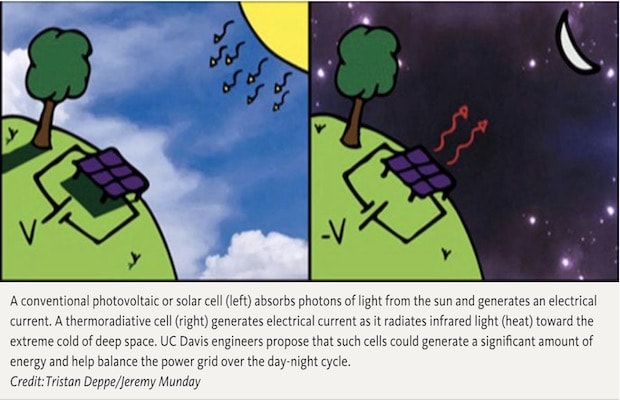

For Professor Jeremy Munday at the Department of Electrical and Computer Engineering at UC Davis, generating power at night through solar cells is – no joke! In fact, a specially designed photovoltaic cell could generate up to 50 watts of power per square meter under ideal conditions at night, about a quarter of what a conventional solar panel can generate in the daytime, according to a concept paper by Munday and graduate student Tristan Deppe.
The article with their findings was recently published in and featured on the cover of, the January 2020 issue of ACS Photonics.
Munday, who recently joined UC Davis is in fact developing prototypes of these nighttime solar cells that can generate small amounts of power. And hopes to improve the power output and efficiency of the devices.
Munday said that the process is similar to the way a normal solar cell works but in reverse. An object that is hot compared to its surroundings will radiate heat as infrared light. A conventional solar cell is cool compared to the sun, so it absorbs light. Space is really, really cold, so if you have a warm object and point it at the sky, it will radiate heat toward it. People have been using this phenomenon for nighttime cooling for hundreds of years. In the last five years, he said, there has been a lot of interest in devices that can do this during the daytime (by filtering out sunlight or pointing away from the sun).


There’s another kind of device called a thermoradiative cell that generates power by radiating heat to its surroundings. Researchers have explored using them to capture waste heat from engines. “We were thinking, what if we took one of these devices and put it in a warm area and pointed it at the sky,” he added.
This thermoradiative cell pointed at the night sky would emit infrared light because it is warmer than outer space. “A regular solar cell generates power by absorbing sunlight, which causes a voltage to appear across the device and for current to flow. In these new devices, light is instead emitted and the current and voltage go in the opposite direction, but you still generate power,” he said. “You have to use different materials, but the physics is the same.”
The device would work during the day as well if you took steps to either block direct sunlight or pointed it away from the sun. Because this new type of solar cell could potentially operate around the clock, it is an intriguing option to balance the power grid over the day-night cycle.
Source: saurenergy.com
The first unit of the Compressed Biogas Plant built by Reliance at the Peddapuram Industrial…
As Karnataka gains momentum in the direction of ‘waste to energy,’ the Mysuru City Corporation…
DCM Shriram Limited has announced that it has successfully commissioned a new Compressed Biogas (CBG)…
TKIL Industries has partnered with global biogas conglomerate KIS Group to advance the production of…
1. What is Awite and what does it have to offer to the Indian biogas…
The Indian Federation of Green Energy (IFGE) and the Embassy of Nepal have jointly organized…